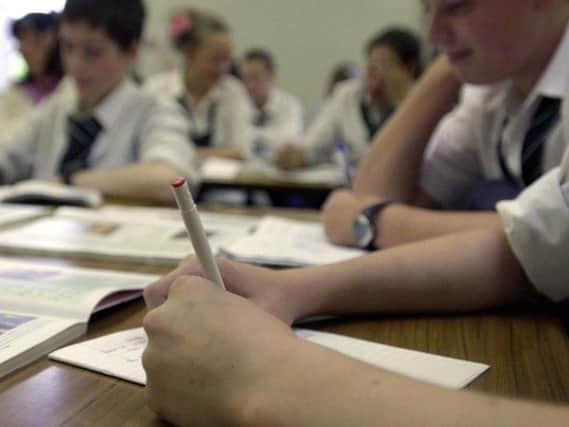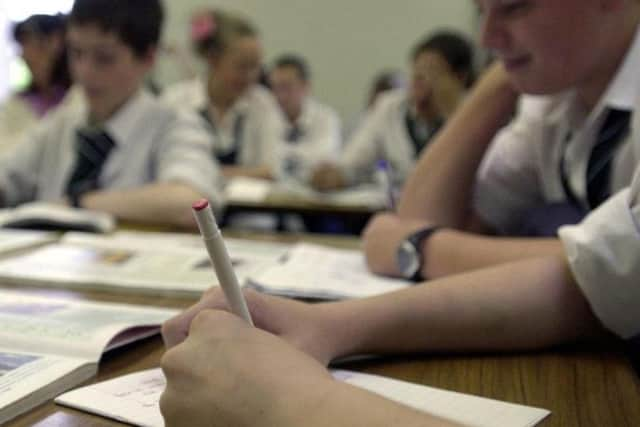The mystery of how some of Lancashire's post-16 students are spending their time


Students have been obliged to stay in education – either full-time or combined with employment – since new government rules were introduced in 2013.
But figures presented to Lancashire County Council's internal scrutiny committee show that between December 2018 and February 2019, an average of 519 16 and 17-year-olds were found not to be in education, employment or training (NEET) – equating to 2.1 percent of all residents in that age group.
Advertisement
Hide AdAdvertisement
Hide Ad

However, four times as many were classed as “not known” – meaning education bosses cannot establish how they are spending their time. A total of 2,017 would-be students fell into that category – eight percent of the population of 16 and 17-year-olds in the county council area.
Across Preston, South Ribble and Chorley, the combined proportions of those identified as NEET or 'unknown' in each council area is below the county-wide figure. Attainment and progress scores at GCSE are also above the Lancashire and national averages.
But committee members warned that it was all too easy for sixth form-aged teens to slip through the net.
“We’re not a country where you have to retake your final exams if you don’t pass them – so we do lose contact with [pupils],” Preston Rural county councillor George Wilkins said.
Advertisement
Hide AdAdvertisement
Hide AdAjay Sethi, the authority’s head of learning and skills, said schools have a duty to provide information and guidance to pre-16 pupils about their next step. Meanwhile sixth forms and further education colleges have been reminded of the need to help the council track their students’ progress - which is already reducing the 'unknown' figures.
“We have an expectation [that] schools provide initial, universal support for those [at risk of becoming] NEET – specifically where they may have just left that institution,” Mr. Sethi said.
“One of the [other] challenges we have is around data sharing…in the post-16 setting. Some providers are really good at sharing information, but others haven’t been as an active, which has affected our quality of data.
“The authority also needed to refresh a number of its systems and processes in order to be able to identify those young people.”
Advertisement
Hide AdAdvertisement
Hide AdThe overall number of 16 and 17-year-olds in Lancashire has fallen in recent years, but is predicted to increase significantly over the next decade by around 7,000.
The meeting heard that Lancashire is in a good position in terms of the further education opportunities on offer, with some of the highest-rated colleges in the country and a network of enterprise advisers linking up students and employers.
However, all bar one of the county's twelve districts – Pendle – saw a drop in post-16 rates of participation in education or training during 2017/18.
Ajay Sethi said further education providers are co-operating with the council to ensure there is a broad range of courses on offer to entice teenagers to continue studying.
Advertisement
Hide AdAdvertisement
Hide Ad“Young people learn in different ways, so having qualifications that are academic, vocational, and occupational, supports different learning styles.
“No single cohort of young people of a particular age remains constant – so their needs will change every year,” Mr. Sethi added.
The meeting also heard that there are council officers dedicated to providing post-16 options advice to youngsters who have been in council care or have special needs and disabilities.
The NEET rate for young people who were in council care is higher than that for all Lancashire 16 and 17-year-olds – at 7.1 percent. However, the proportion of ‘unknowns’ in that cohort is slightly lower than the general population, at 8.6 percent.
Advertisement
Hide AdAdvertisement
Hide AdFor young people with special needs and disabilities, the known NEET rate is broadly similar to that of all students in the relevant age range – at 2.3 percent – while the ‘unknown’ rate is much lower than the general population at 3.7 percent.
Committee member David Whipp said that the process of tracking pupils needed to begin long before they turn 16.
“I come across quite a lot of vulnerable youngsters who are no longer in mainstream education and [so] when they get to this age group, we’ve really lost track of them.”
DISTRICT-BY-DISTRICT
The number of 16 and 17-year-olds classed as NEET or ‘unknown’ across the Lancashire County Council area is 2.536 or 10.1 percent of the sixth form-aged population in the county (December 2018 to February 2019 average).
Advertisement
Hide AdAdvertisement
Hide AdWithin each district, the combined NEET and 'unknown' figure - and the percentage which it represents of all 16 and 17-year-olds in that area - is:
BURNLEY
220 individuals (11.0 percent)
CHORLEY
205 individuals (9 percent)
FYLDE
125 individuals (9.1 percent)
HYNDBURN
232 (11.6 percent)
LANCASTER
300 individuals (11.3 percent)
PENDLE
203 (9.3 percent)
PRESTON
285 individuals (9.5 percent)
RIBBLE VALLEY
96 individuals (7.2 percent)
ROSSENDALE
178 individuals (11.2 percent)
SOUTH RIBBLE
188 individuals (7.2 percent)
WEST LANCASHIRE
284 individuals (12.2 percent)
WYRE
220 individuals (10.7 percent)